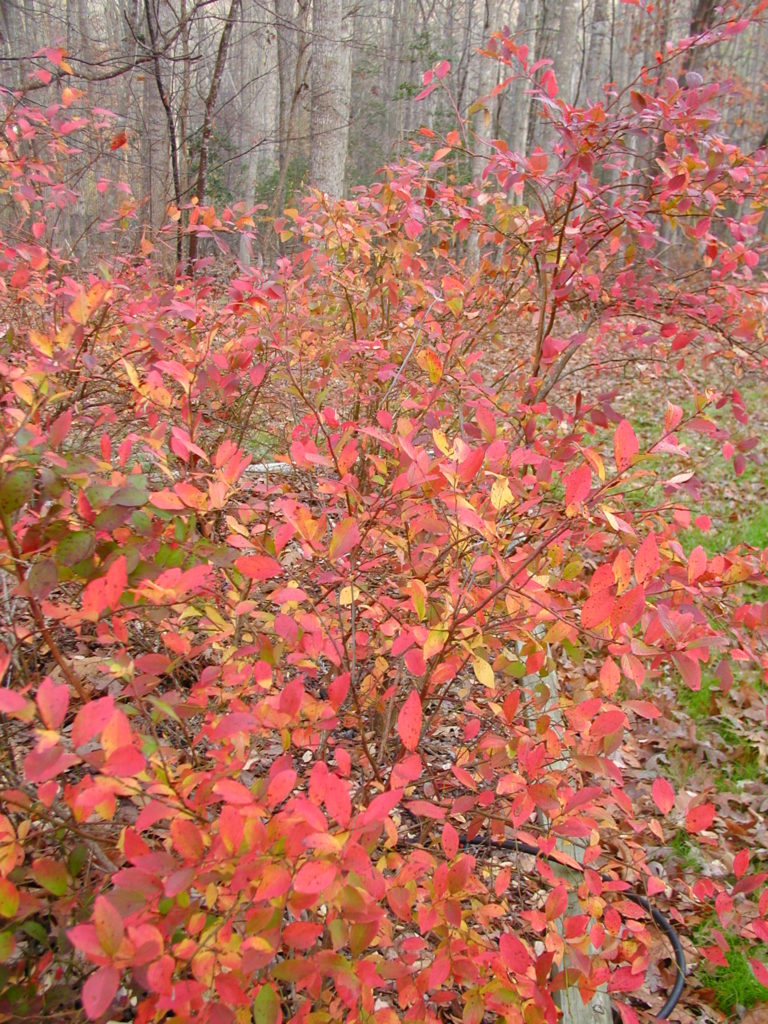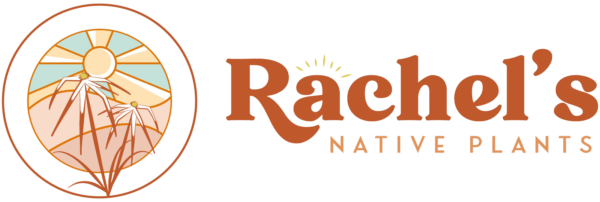The beloved Highbush Blueberry is a deciduous shrub native to much of Eastern North America, with outstanding landscape value over three seasons. It’s clusters of dainty, hanging, bell-shaped, white-pink flowers are lovely in spring, followed by tasty blue berries that ripen in summer. These are valued by humans, birds, and smaller mammals. Then in the fall the foliage exhibits an array of the season’s best reds and golds. It grows to about 10 feet in full sun or partly shady light conditions (the more light, the more berries and the more fall color). In nature it is found on the higher mounds in swamps and low areas — in other words, moist but well drained soils. It is easily grown in an upland yard or garden where a low pH can be maintained and where it consistently rewards the gardener well for his investment with its beauty and its appeal to wildlife.
NURSERY HOURS
Wednesday: 10-4 Thursday: 10-6 Friday-Saturday: 10-4 Sunday: 12-4
Vaccinium corymbosum

Key Info
Scientific Name: Vaccinium corymbosum L.
Common Names: Highbush Blueberry, Blue Huckleberry, Tall Huckleberry, Swamp Huckleberry, High Blueberry, Swamp Blueberry.
Family Names: Ericaceae
Plant Type: Tree / Shrub
Moisture Requirement: Moist well drained
Leaf Retention: Deciduous
Flower Color: White
Special Characteristics: Rhizomatous, Attracts bees, Attracts butterflies, Good fall color, Attracts birds, Edible fruit (in jams)
Additional Info
Habit: Erect, with numerous stems from the base, with many small, twiggy branches, shreddy bark; roots woody to fibrous, spreading and shallow.
Height: up to 12' but usually 5' to 8'
Spread: up to 10'
Soil Conditions: Medium to wet but well drained soil, optimum pH 4.5 to 5.5. Organic soil; can tolerate peaty, sandy, to rocky soils.
Leaves: Alternate, elliptic to oval-shaped, up to 3 inches long x 1-1½ inches, entire, acute, with smooth or toothed margins, medium to dark green and leathery above, paler and fuzzy below especially on the veins.
Flowers (or reproductive structures: White or pinkish white, 1/3 inch, urn-shaped flowers with small recurved teeth and a short calyx with 5 broad teeth, in terminal or axillary racemes.
Fruit: ¼ - ½ inch dark blue berries with a white bloom - "blueberries", juicy, containing many tiny seeds.
Natural Distribution: High quality wetland habitats, bogs, pocosins, pine barrens, and rarely upland woods.
USDA Hardiness Zone: 3 to 8
USDA Wetland Indicator Status in NC: FACW
Pollination: Bees, butterflies, other insects
Wildlife Connections: The Blueberry flowers attract butterflies, moths and bees, and are of special value to native bees and bumble bees. Blueberries are host plants for the Brown Elfin butterfly. Over 30 species of US birds feed on the berries, including Blue birds, Scarlet tanagers and Northern cardinals, Ruffed grouse, Eastern bluebird, Catbird, Veery, Wood Thrush, and Sandhill crane. Fruit are also consumed by many mammals, including the Black bear, Red fox, Raccoon, Eastern skunk, White-footed mouse, and Jumping mouse. The twigs and foliage are eaten by the White-tailed deer and Cottontail rabbit during the winter. The value of this shrub to wildlife is high. (Illinoiswildflowers.info)
Propagation: Softwood cuttings in spring, or from seed, or digging up occasional rootsprouts.
